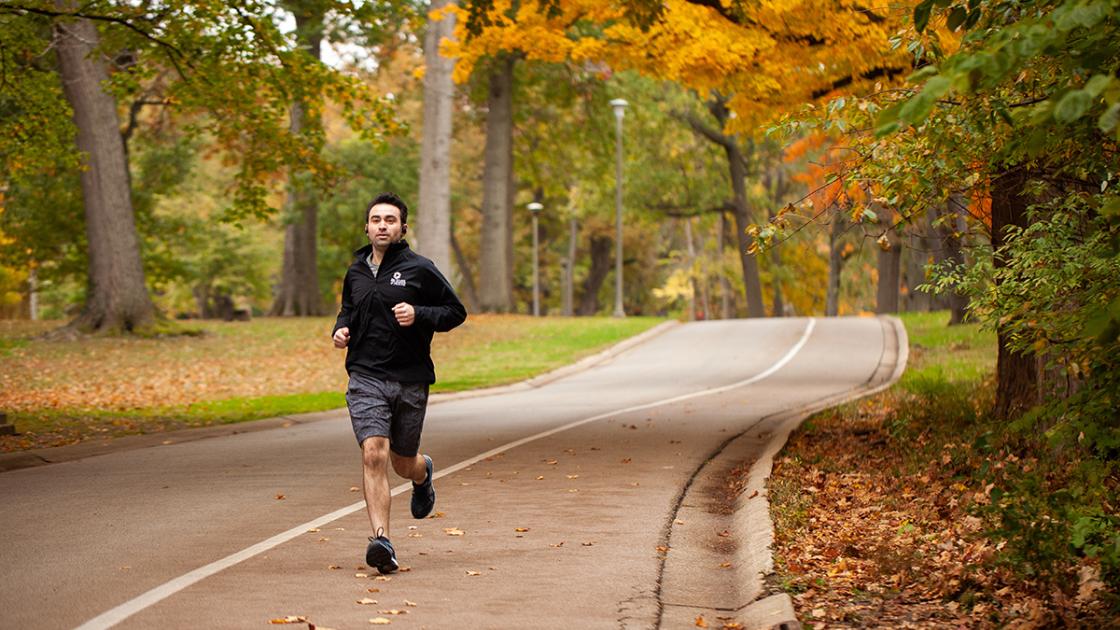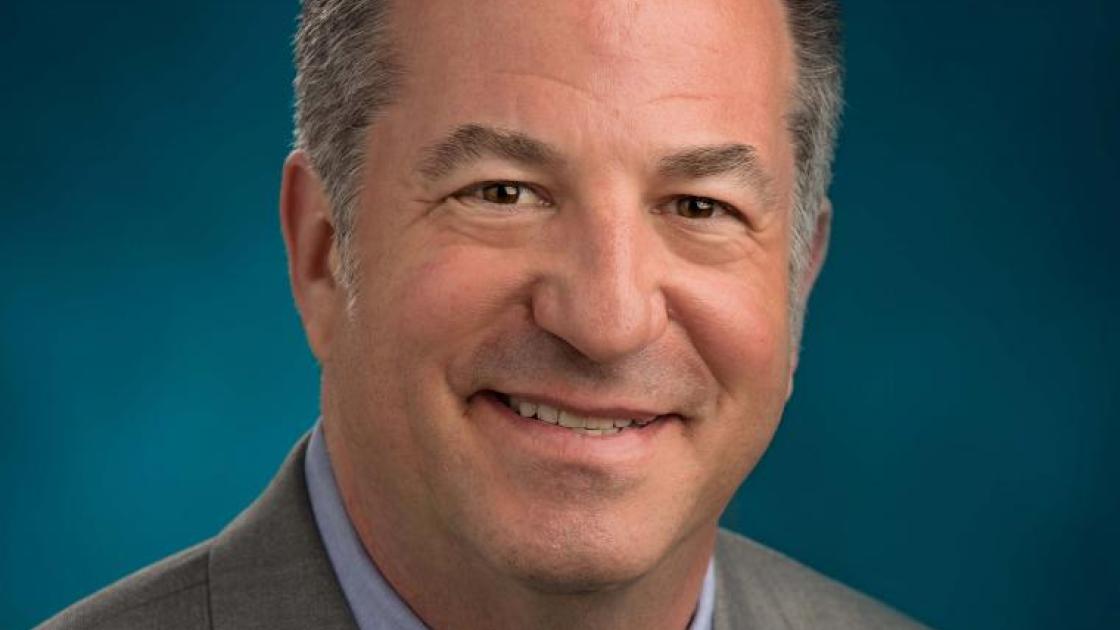
Aspects of a Learner | Matt Mannion
Preparing tomorrow’s physicians has been the central focus of SIU School of Medicine since its founding in 1970. Our progressive educational philosophy has helped to distinguish us from the other U.S. medical schools that also began in that era, and it is one of the features that continues to attract learners and academic leaders to the institution.
As SIU School of Medicine turns 50 in 2020, it is becoming more common to have second-generation students come through the system and train in some of the same spaces that their parent did. In this expanded ‘Aspects of a Learner’ profile, we spotlight a central Illinois family that has produced one teacher and three students following the family tradition of medicine.
Marion Panepinto, MD, was one of the school’s original cardiology instructors. His daughter, Julie, is a professor of pediatrics, hematology, and a clinician scientist from the Class of ’91. Second-year medical student Matt Mannion is Marion’s grandson, and Matt’s younger sister, Aileen, is now enrolled in SIU’s Physician Pipeline Preparatory Program for high school students, the same ‘P4 ’ that Matt attended in its inaugural year
On an overcast autumn afternoon, the group gathered at SIU to reflect on their overlapping histories.
FATHER MARION
“My father was a general practice physician,” said Dr. Marion Panepinto, a retired cardiologist. “I came to Springfield in 1970. I was the city’s third cardiologist. Cardiology wasn’t as developed as it is now, so we saw a lot of general medicine patients as well.”
“As the new medical school was getting established, there was no full-time faculty, so the administration relied on some of us physicians in the community to help educate the learners,” he said. The first students began training in classrooms, clinics and spaces around Springfield in 1972 with doctors who were interested in teaching.
Panepinto initially worked with residents, but later “clerked” third-year students who would spend a month rotating through his office and making hospital rounds as an internal medicine elective. (At the time, medical school could be completed in three years.) He would let them see patients, discuss diagnoses and accompany him to the cath lab—the exam room where diagnostic imaging equipment was used to visualize the physiology of the heart. He’d also let them do some of the easier procedures, often for the first time, under his supervision.
The community physicians received a modest stipend. After SIU had hired full-time faculty, the stipend ended. “So we worked as volunteers, because the money didn’t matter anyway,” said Panepinto. “That wasn’t why we were doing it.”
Panepinto found a considerable benefit to the time spent with students.
“I enjoyed it a great deal. It kept my mind sharp. I had to keep up with everything because the students were quite intelligent and they asked a lot of questions. And they were questions that you’d better know the answers to.”
DAUGHTER JULIE
Julie Panepinto, MD, MSPH, one of Marion’s four daughters, decided to follow in her father’s and grandfather’s footsteps and pursue medicine as a career. She began classes at SIU’s Carbondale campus in 1987. She is now a professor of pediatrics at the Medical College of Wisconsin/Children’s Wisconsin Milwaukee, where she spends a majority of her time in research, investigating therapies for sickle cell disease.
She has fond memories of her time in medical school, the people and curriculum that prepared her for the challenging and rewarding career ahead.
“There was such an early, strong exposure to clinical medicine and good diagnosticians… and the novel, innovative ways they’d work in simulations and interactions with patients,” she said. “Even to this day, I don’t think other medical schools are doing it as well as SIU did it for us way back in the ‘90s.”
Julie believes SIU’s small class size fosters friendships. “You got to know everyone. You were working hard but also enjoying time when we could get away from school. My parents had a boat and eventually a home on Lake Springfield, so we could get out and go skiing and boating and have fun.”
She considers three physicians to be among the most influential in her youth. “Dr. [J. Kevin] Dorsey, when he was still faculty down in Carbondale, really enjoyed teaching. He taught us so much about clinical medicine during our first year,” she said. “Dr. Randy Kienstra was the chair of the pediatrics department when I rotated through. Some of the class could be a little intimidated by him, including myself, but I thought it showed he had high expectations and really cared about the students. I learned a lot from him.”
“And of course, my father. I got to do an ambulatory care rotation with him in my fourth year.”
An interest in hematology/oncology in medical school set Julie on a course for relevant programs and training early in her residency. “I knew I wanted to be in a practice where I could take care of children throughout their lifespans, but focus on the chronic disease care, too. Kids are happy and resilient, even when dealing with chronic disorders. They still bring a fair amount of joy despite the hardships they face. I was drawn to that.”
Panepinto completed her pediatric residency in Madison, Wisconsin, and fellowship training in hematology/oncology/ bone marrow transplant in Denver at the Children’s Hospital of Colorado. She then worked for three years at Brown University/Hasboro Children’s Hospital in Rhode Island where her husband did his fellowship training before returning to Wisconsin and joining the faculty at the Medical College of Wisconsin.
“I always knew I wanted to see patients and practice clinically. I had no idea I was going to become a researcher, but it’s really become a primary part of my job,” says Panepinto. “You don’t see a lot of that in medical school or understand what it might involve for your career. I’ve been fortunate to be able to support my lab through new projects over the years.”
“Kids with sickle cell disease are diagnosed right after birth, so you’re following them until they become a young adult and graduate into adult medicine. Since it is a genetic disease, you are also taking care of siblings in the family. It’s a population that has typically not had the benefit of a lot of advanced medicine,” she said. “Being able to advocate for them has been one of the most fulfilling things of my life.”
Dr. Marion Panepinto, Dr. Julie Panepinto, Matt and Aileen Mannion
GRANDSON MATT
Matt Mannion has some clinical experience in common with his Aunt Julie. He worked in a biochemistry research lab at Ohio’s Miami University, with a professor who emphasized the work’s importance “from bench to bedside.” He followed his undergraduate education with a year as a clinical research coordinator at the University of Cincinnati Department of Emergency Medicine.
His work at UC required lots of collaboration that prepared him for medical school. “Whether it is residents, fellows, other medical students or the patients themselves, health care is a team effort and that’s something that SIU does well.”
Mannion also did some research for the SIU Department of Emergency Medicine in the summer of 2019 and got to present his findings at the Society of Academic Emergency Medicine regional meeting. “It has biased me toward emergency medicine, but I really don’t know what I want to do yet. I want to try to do my best through the rotations and enjoy each one.”
“SIU does a great job of providing those experiences— research, community engagement, strong clinical opportunities to learn outside the curriculum. A lot of the physician professors will let you shadow them and tell you the advantages and disadvantages of their specialties.”
It reminds Mannion of something he picked up in the Physician Pipeline Preparatory Program.
“[P4 Director] Dr. [Wesley] McNeese brought in physicians who didn’t just talk about their specialties, they talked about why they loved their specialties. They were very candid. That was almost more important to hear when you’re high school age.”
Matt found out about “this brand new program being offered to high school students” in the fall of his freshman year. He met with his guidance counselor, discussed it with his parents and put his application together. In retrospect, he said the interview was similar to applying to medical school, with some of the same questions.
P4 is now 10 years old, but to Matt “it was great right off the bat. It gave you a taste of what medical school was like. You’re interacting with students, talking to someone who’s not a doctor or a resident, and they’re closer to your own age. It gives you something to think about, to learn how they did it, what was their path from high school to medical school. That’s very valuable for kids.”
“I feel fortunate that I was here, in one of the few places in the country with a high school pipeline program, and that I got to go through it and matriculate into medical school,” said Matt. “I’m grateful to SIU for making it happen.”
GRANDDAUGHTER AILEEN
Aileen Mannion, a sophomore at Springfield High School, just completed the fall P4 module. She knew much of what to expect from talking to Matt, and so far the pipeline program is living up to its billing.
“I’m enjoying learning from the physicians and medical students just what it takes to become a doctor, the different perspectives in the medical field.” She said the hands-on activities, like the trauma simulation where she got to triage patients, are particularly potent
Growing up with a mother who is a social worker, and physicians and a medical student in her immediate family, Aileen does not lack for role models. This particular afternoon she smiled at her aunt who was visiting from Milwaukee. “Aunt Julie works very hard, and she’s really, really good at what she does. It’s inspirational to have a strong female doctor to look up to.”
GRANDPA KNOWS BEST
When asked what advice he would give his grandchildren, the retired cardiologist Dr. Marion Panepinto speaks from the heart. “There are many things I can tell them, but the most important one is how they relate to the patient,” he said. “Compassion is so important.”
“It’s something that you can’t teach. But you have to let them know what it means to be kind to patients who are suffering with their illness.”




